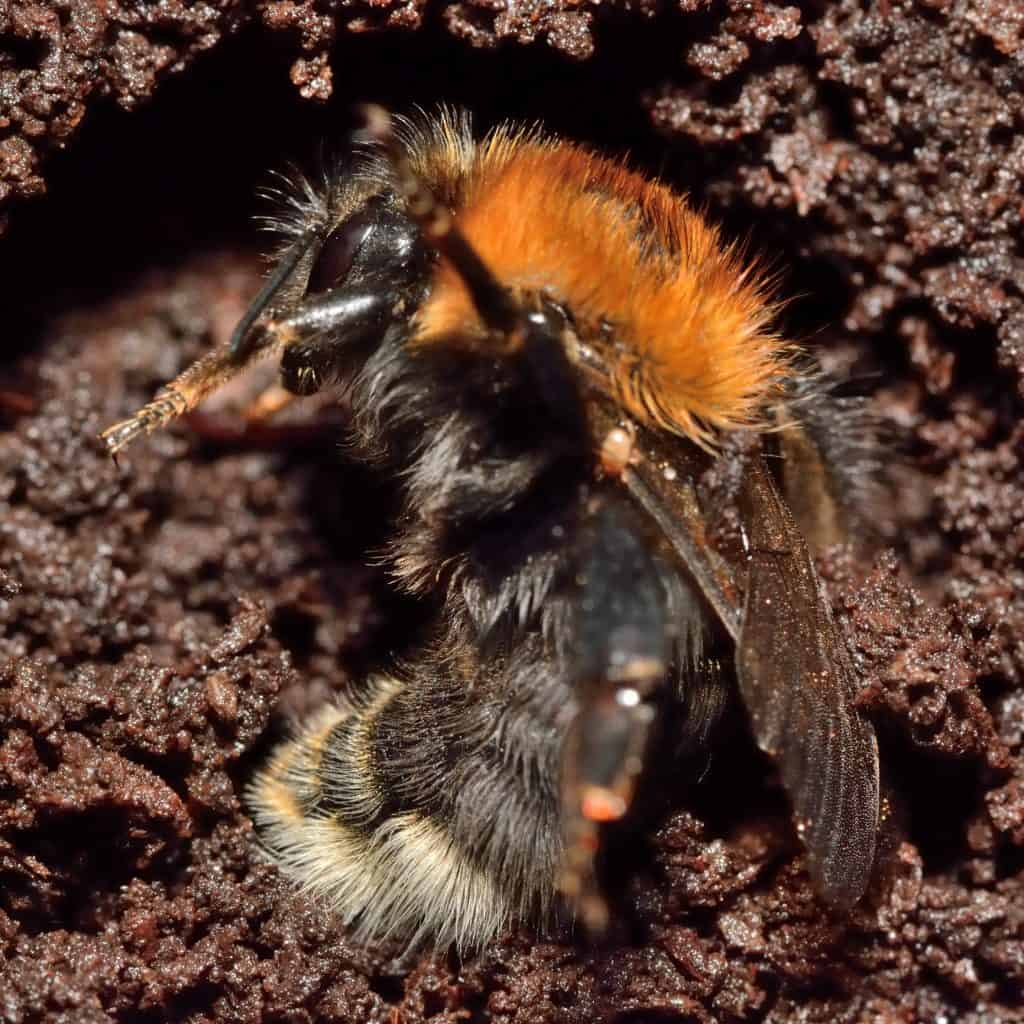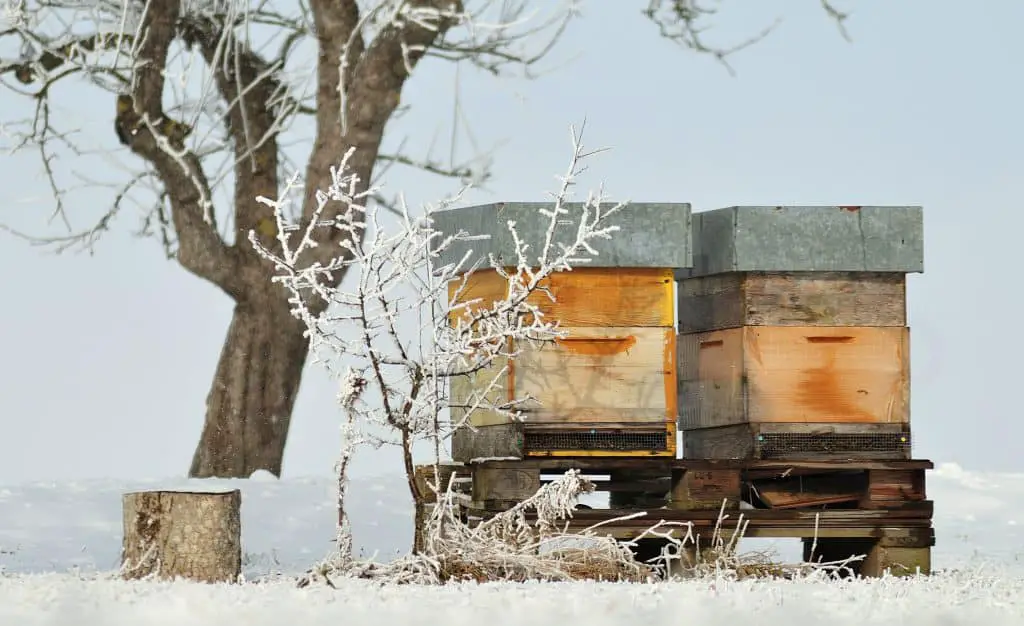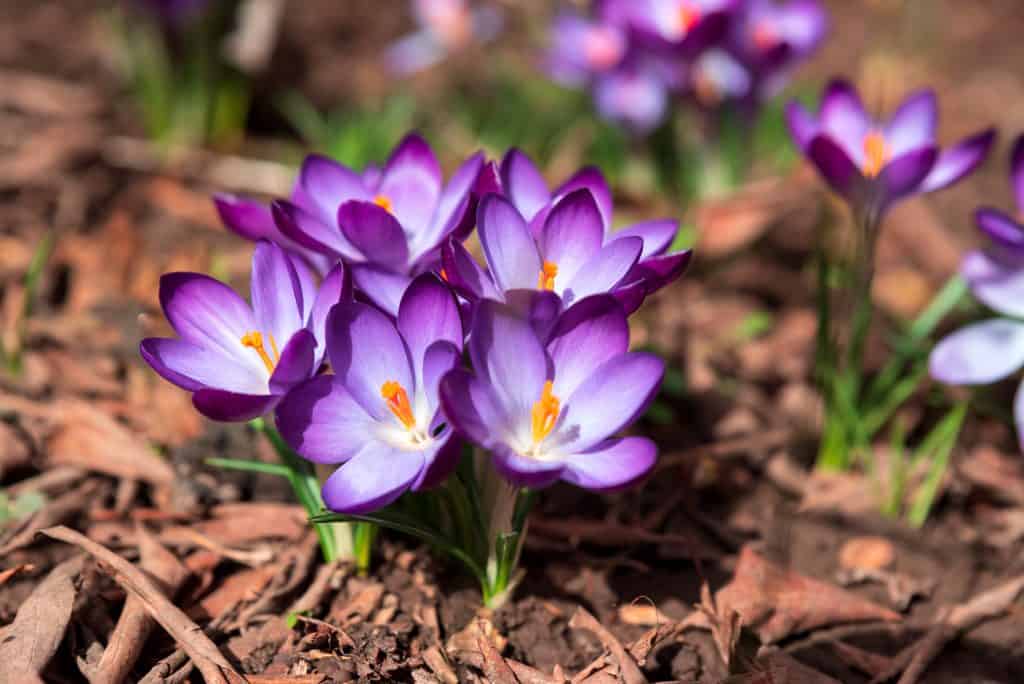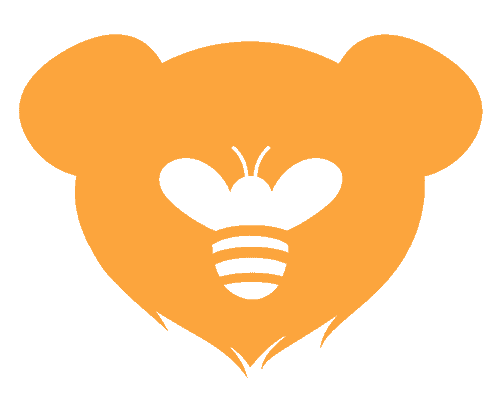We’ve all seen bees buzzing around in the summer months, but where do they go in the winter? Do they hibernate, like some mammals? How do bees survive the winter? You may have asked yourself these questions if you’re interested in bees.
While some bees do hibernate, there are different kinds of hibernation that bees perform. Additionally, some bees, such as honey bees, do not need to hibernate to survive winter. Some bees hibernate as larvae or pupae rather than as adult bees, while some species of bees only have a single queen that hibernates through winter.
What is Hibernation?
Before we talk about whether bees hibernate and what kinds of bees hibernate, it’s important to understand what hibernation is in the first place.
Hibernation occurs when endothermic or heterothermic animals need to conserve energy in cold temperatures or when they don’t have available food sources. Bees that do hibernate, hibernate in cold months, during which there are no flowers for food and the external temperature drops.
Hibernation is essentially a practice in which the animal allows its body to cool off to the point where its metabolism and breathing slow down substantially. This allows the animal to survive without food or heat for long periods of time. Read on to understand hibernation more specifically.
What Does Endothermic Mean?
Endothermic animals are those that regulate their own body temperature regardless of external factors. Typically, we think of these types of animals as “warm-blooded.” It is slightly more complicated than warm-blooded and cold-blooded, but for the purposes of this article you only need to know that endothermic animals can produce heat with their metabolisms and by shivering.
Ectotherms are the opposite of endotherms, meaning that they only get heat from external sources. Many lizards, for example, are ectotherms, and this is why you might see them sitting in the sun to warm up.
Bees are primarily endotherms, meaning that they generate their own body heat by consuming calories and converting them to heat energy to keep themselves alive. However, bees can also sometimes be somewhat ectothermic, meaning that they allow the external temperature to cool them off and make them enter hibernation. This is called heterothermy.
What Does Heterothermic Mean?
Heterothermic is a term for animals that can both regulate their own body temperature and also allow the outside environment to change their body temperature. Essentially, they sort of swing between what one might call “warm-blooded” and what one might call “cold-blooded.” Again, it’s more complex than this, scientifically, but you mostly need to know that this capacity is what allows bees to hibernate.
Many bees are heterothermic, meaning that they can both generate their own heat by shivering and eating, but can also allow their body temperatures to drop substantially when it gets cold outside. This drop in body temperature and the resulting slow of metabolism and breathing is called hibernation.
Do All Bees Hibernate?

Not all bees hibernate. For example, honey bees have other ways of surviving the winter that do not involve hibernation. And of course, bees that live in more tropical climates are typically active year-round and do not hibernate at all.
Bees that do hibernate include solitary bees living in temperate climates, who typically overwinter in their nests, and bumblebees, whose queens hibernate to survive winter.
Do Honey Bees Hibernate?
Honey bees are one of the few types of bee that does not hibernate at all, instead employing other methods to survive in colder climates. While honey bee colonies become less active in the winter months, most of the bees do not die and instead simply huddle together in their hive.
In the summer months, honey bees create enough honey as food stores to last them through the winter. On warmer days in the winter, the bees feed on this honey. When it is colder outside, the bees form a huddle in their hive, similar to how humans will huddle together in cold water to survive.
Older worker bees typically form the outside of the cluster, while the younger bees are closer to the center. The queen is in the very middle of the cluster. All the bees then move their wing muscles, using them to generate heat, much like shivering.
Do Bumblebees Hibernate?
Bumblebee colonies as a whole do not hibernate, but bumblebee queens do hibernate through winter.
During the summer, queen bees lay fertilized eggs and raise worker bees, and then in the fall they lay unfertilized eggs to hatch into drone bees. At the same time that they are laying the drone eggs, they also lay fertilized eggs that will become next year’s queen bees.
Once the new queen bees and the drone bees hatch out of their eggs, they mate, and the new queen bees store the sperm in their bodies. At the end of the fall, all the worker and drone bumblebees die off, leaving only the new queens to survive the winter.
The newly hatched queen bees, after mating with the drones, find a crevice in which to spend the winter. They settle down in their winter home and hibernate until spring.
In the spring, the queen bees emerge from their hibernation and begin to find nectar to feed on. They then lay eggs to create worker bees, who make up the next year’s colony.
Do Solitary Bees Hibernate?
Solitary bees are bees that typically live in the ground, and do not form colonies like honey bees. Solitary bees simply each make their own nest and lay their own eggs in those nests.
Most solitary bees hibernate, in the sense that they remain in their nests throughout winter and do not exit to feed on anything. Depending on the species, the bees may overwinter as adults or as larvae or pupae, and then continue developing into adults when spring comes.
Typically, solitary bees emerge from hibernation in the spring and begin to lay eggs underground. These eggs may develop into larvae or even pupate, or they may fully develop into adult bees. However, these new bees almost always spend the winter in their nests underground and do not emerge until the next spring when they are done hibernating.
Why Do Bees Hibernate?
Bees hibernate in order to conserve resources when food and energy are scarce. Like other animals, when it gets too cold for the bees to be outside gathering food, or there is no food available because the flowers have died for winter, bees go into hibernation in order to survive without food and heat.
How to Help Honey Bees Survive Winter
If you are a beekeeper who is concerned about how your bees will spend the winter, there are several ways that you can help your colonies survive the colder months. Read on to learn how to ensure that when you open your hives in the spring, all of your bees will still be alive.

Keep Your Hives in the Sun
One way to aid your bees in maintaining heat throughout the winter is simply to keep their hives stored where they will get maximum winter sunlight. Most sunlight in the winter comes from the south in the Northern Hemisphere, and from the north in the Southern Hemisphere.
So, if you live in the Northern Hemisphere, you’ll want to keep your beehives where there are no large objects such as houses between the hives and the southern sun. Likewise, if you live in the Southern Hemisphere, you’ll need to make sure that there is a clear path from the north so that the sun can hit your hives.
Check for Parasites
If you are keeping honey bees and looking for ways to help them survive the winter, one of the most important things you can do is check for pests and parasites before getting them ready to overwinter.
Parasites such as Varroa mites or wax moths can wreak havoc on a bee colony while they are trying to survive winter. While during the summer months, bee colonies are larger and contain more workers that are able to defend the colony and hive from parasites, the colony shrinks in the winter and is less prepared to combat parasites.
Performing regular parasite checks, especially immediately before winter, is essential for your bees’ health.
Create Wind Blocks
Another way that you can help your bees survive winter is to create wind blocks around their hives so that they do not experience wind chill. You can place your hives near bushes or trees, or even stack up hay bales or logs around them to keep the wind away from them. Make sure not to block the winter sun with your wind blocks, though.
Feed Your Bees Regularly
Especially in the springtime when the colony is getting ready to start foraging but there aren’t so many flowers available, it is essential to feed your bees so that they do not starve. Bees often die in the early spring because they become more active but cannot find flowers to feed on.
You can also feed your bees throughout winter with grease patties, fondant, or even sugar water if it is above freezing. This will help them survive the winter if they have not stored up enough honey to get them through the colder months.
How To Help Other Bees Survive Winter
Even if you don’t keep bees, you may be interested in how to help wild bees survive winter. It is important that we help bees survive, because they are important pollinators of many plants.
Leave Their Habitats Alone
One of the best ways to help bees survive winter is to ensure that you are not interfering with their hibernation spots. Bees often hibernate in piles of leaves, dead trees, wood stacks, and hollow flower stalks. Disturbing their natural habitat can cause bees to freeze in the winter.
You can help maintain bee habitats by not clearing away dead leaves or dead plants from your garden, and instead allowing them to turn into mulch where the bees can hibernate. Additionally, as some bees hibernate in places like compost heaps, you can help such bees by not turning your compost.
Keep Early Flowering Plants

One of the best ways to help wild bees survive winter is to plant flowers that bloom early in the spring to give the bees food sources as soon as they emerge from hibernation. Crocuses, snowdrops, hyacinths, hellebores, and primroses are some flowers that you can plant to help bees survive winter.
Additionally, allowing your yard to grow long early in the spring will help the bees. Flowers like dandelions and other weeds are actually really great food sources for bees, and should be left alone, especially in the early spring. This will allow the bees to find the nectar and pollen that they need to survive another generation.

